March 11, 2017 show
Historic women in science
The success of the recent film Hidden Figures, which tells the story of a trio of African-American women whose work in mathematics played a crucial role during the Space Race of the late 1950s and 1960s, has focused the public's attention on the often-overlooked roles of women in science.
Here in the Hoosier state, in sciences ranging from physics to home economics, the early and mid-1900s saw women becoming pioneers in scientific research.
But they confronted myriad challenges, and their trailblazing efforts often have been ignored.
Hoosier History Live will strive to rectify that as we salute Women's History Month by spotlighting the innovations of - and obstacles confronted by - a physicist from southern Indiana who pioneered new theories (but whose career was stalled because of McCarthyism during the Cold War) and two women associated with Purdue University who were pioneers in "bringing science into the home." One of them traveled across the Hoosier state during the World War I era to share research with farm women.
Nelson's guests will include:
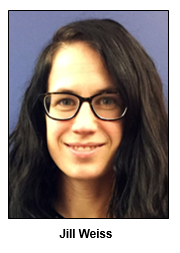 Jill Weiss, digital outreach manager at the Indiana Historical Bureau. She will share insights about Melba Phillips (1907-2004), a native of Hazleton, Ind., who became an internationally acclaimed physicist, worked to improve science education and, according to Jill, "advocated for women's place at the forefront of science research." Following World War II, Phillips and other scientists organized to prevent nuclear war. She was fired from university posts, though, after being accused of advocating subversive positions. Jill Weiss, digital outreach manager at the Indiana Historical Bureau. She will share insights about Melba Phillips (1907-2004), a native of Hazleton, Ind., who became an internationally acclaimed physicist, worked to improve science education and, according to Jill, "advocated for women's place at the forefront of science research." Following World War II, Phillips and other scientists organized to prevent nuclear war. She was fired from university posts, though, after being accused of advocating subversive positions.- And Angie Klink, a Lafayette-based author and historian whose eight books include Divided Paths, Common Ground (Purdue University Press, 2011). It is a dual biography of Mary Matthews, who became the first dean of home economics at Purdue University, and Lella Gaddis, the first state leader of home demonstrations in agricultural extension.
"She hit the road to take research and knowledge ... directly to farm women who often were isolated," Angie notes, referring to Gaddis. Prior to her outreach, what farm women knew about food preservation (a particularly important topic during World War I when meat, sugar and other goods were in high demand) sanitation and nutrition often had just been "handed down by word-of-mouth from their mothers."
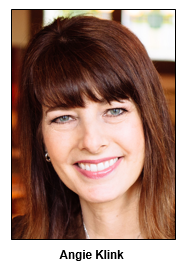 When Matthews was initially appointed a department chair of home economics in 1912 prior to becoming Purdue's first dean of the subject, "she had little support from the men in power at Purdue," Angie writes. When Matthews was initially appointed a department chair of home economics in 1912 prior to becoming Purdue's first dean of the subject, "she had little support from the men in power at Purdue," Angie writes.
Melba Phillips, the physicist, encountered enormous challenges during her long career, but she rebounded and became the first woman president of the American Association of Physics Teachers in 1966.
More than 20 years later, according to a blog that our guest Jill Weiss has written for the Historical Bureau, Brooklyn College publicly apologized for having fired Phillips during the 1950s. Eventually, the college even created a scholarship in her name.
Phillips, who had studied under Robert Oppenheimer and went on to write two physics textbooks, was living in Petersburg, Ind., when she died at age 97. During the 1950s, she had refused to testify before a subcommittee of the U.S. Senate Judiciary Committee that was investigating internal security.
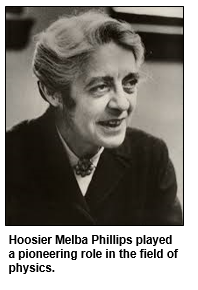 Jill's blog about her is titled "Melba Phillips: Leader in Science and Conscience." Phillips also will be the subject of an upcoming episode of the new IHB podcast Talking Hoosier History, which Jill helps produce. Jill's blog about her is titled "Melba Phillips: Leader in Science and Conscience." Phillips also will be the subject of an upcoming episode of the new IHB podcast Talking Hoosier History, which Jill helps produce.
According to Jill's blog, Melba Phillips graduated from high school at 15, then studied at Oakland City College (which became Oakland City University in 1985) in southern Indiana. Eventually, she earned a Ph.D. and became "known throughout the physics world" because of her contributions to the field.
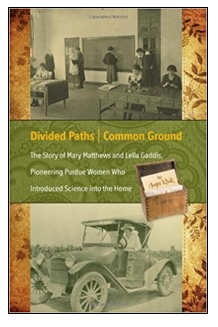 As described in our guest Angie Klink's book Divided Paths, Lella Gaddis "tooled down the country roads past Indiana cornfields" to bring the latest science about vitamins, food preservation, sanitation and other topics to farm wives. On the running board of her Model T, Gaddis propped her demonstration suitcase - and held onto it as she traveled on the rural roads. As described in our guest Angie Klink's book Divided Paths, Lella Gaddis "tooled down the country roads past Indiana cornfields" to bring the latest science about vitamins, food preservation, sanitation and other topics to farm wives. On the running board of her Model T, Gaddis propped her demonstration suitcase - and held onto it as she traveled on the rural roads.
Divided Paths also tells the story of an unconventional "lady farmer," as Virginia Claypool Meredith was called during the late 1800s and early 1900s. During our show, we also will explore her pioneering career, which included becoming the first woman on Purdue's board of trustees in 1921.
When Virginia Claypool Meredith was 33 years old in 1882, she had to take over the running of a 115-acre cattle and sheep farm near Cambridge City, Ind, when her husband died unexpectedly, according to Angie's book. "She became a nationally recognized agricultural speaker and writer."
Some of the women pioneers in science will be explored during a Hoosier Women at Work conference on April 1 hosted by the Indiana Historical Bureau, 315 W. Ohio St. in Indianapolis.
History Mystery
Purdue University was the sponsor of the twin-engine airplane that famous aviator Amelia Earhart was flying when she vanished in 1937. In the years before her death, Amelia Earhart had developed a close professional relationship with Purdue, where she was a lecturer and career counselor for women students. Amelia Earhart even lived in a women's dorm while on campus.
Her interest in Purdue during the 1930s was the result of several factors, including the fact that it was the only university in the country to have something.
Question: What was it?
The call-in number is (317) 788-3314. Please do not call in to the show until you hear Nelson pose the question on the air, and please do not try to win the prize if you have won any other prize on WICR during the last two months. You must be willing to give your name and address to our engineer and be willing to be placed on the air, and you must answer the question on the air.
The prize is a pair of passes to the Indiana Experience exhibit at the Eugene and Marilyn Glick Indiana History Center, courtesy of the Indiana Historical Society, and a gift certificate to Story Inn, courtesy of Story Inn.
Roadtrip: Adams Mill in Carroll County
 Guest Roadtripper and travel writer Jane Ammeson suggests a trip to Adams Mill in Carroll County, about 60 miles north of Indianapolis. John Adams built the three-and-a-half story mill on Wildcat Creek in 1845-46 in Cutler, a tiny village near Lafayette. Guest Roadtripper and travel writer Jane Ammeson suggests a trip to Adams Mill in Carroll County, about 60 miles north of Indianapolis. John Adams built the three-and-a-half story mill on Wildcat Creek in 1845-46 in Cutler, a tiny village near Lafayette.
Adams Mill is filled with historic treasures on all its floors, including a Conestoga Wagon and a canvas bathtub used by pioneers as they traveled out west. The mill also has the original milling equipment and artifacts from when it housed a post office. And just down a winding country road is the Adams Mill Covered Bridge, built in 1872.
Adams Mill was placed into the National Register of Historic Places in 1984. Open for tours, it is a fascinating look back in time when mills served the towns and outlying regions where they were located. And it's also one of the few survivors in the 21st century. At one time saw mills and grist mills dotted the landscape of Indiana, necessary for both grinding grain and sawing lumber for building. Now just about 13 remain.
9 years on the air!
Nine-year soiree makes a little Hoosier history
On Feb. 23, a star-studded gathering of listeners, fans, show guests and civic leaders celebrated nine years on the air for Hoosier History Live. The Indiana Landmarks Center teemed with history-minded folks, and in some cases folks from history, including President Benjamin Harrison and suffragist May Wright Sewall.
Congratulations abounded. Indianapolis Mayor Joe Hogsett dropped in to say a few kind words to his old college pal, our host Nelson Price. Here's a mayoral tidbit: Nelson's father was a mentor for young lawyer Hogsett, who went on to become Indiana secretary of state and a U.S. attorney.
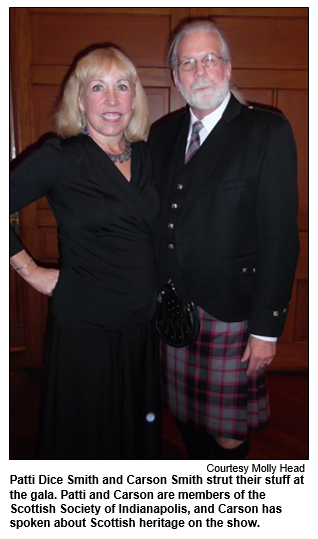 Judy O'Bannon gave a tour de force talk on how knowing our history together unites us across time. O'Bannon was a member of the Central Avenue United Methodist Church, the denomination that originally constructed the building that today, after years of painstaking renovation, houses the Indiana Landmarks Center. The very floors are history, she noted, recalling the lives lived and joined and mourned during the time of the church and now on into the future. Judy O'Bannon gave a tour de force talk on how knowing our history together unites us across time. O'Bannon was a member of the Central Avenue United Methodist Church, the denomination that originally constructed the building that today, after years of painstaking renovation, houses the Indiana Landmarks Center. The very floors are history, she noted, recalling the lives lived and joined and mourned during the time of the church and now on into the future.
The WICR 88.7FM program director, Henri Pensis, offered words of encouragement to the team - and yet another good reason to always listen to the show - saying that as a new arrival to the state he continues to learn much about Indiana from the show.
The party was made possible by our sponsors, Core Redevelopment and MBP Distinctive Catering.
Thanks from Nelson and the team to Garry Chilluffo, party organizer extraordinaire, and also to Gary BraVard, event planner, for helping to put the dazzle in this anniversary soiree.
All we at Hoosier History Live can say is ... look out for our 10-year affair. It is sure to be a doozy.
As per usual, Nelson and his quiz-show assistant Molly Head, our producer, entertained the crowd with fresh History Mystery questions and fabulous prizes. With so many authors and experts in the crowd, Nelson had to disqualify some from answering certain questions.
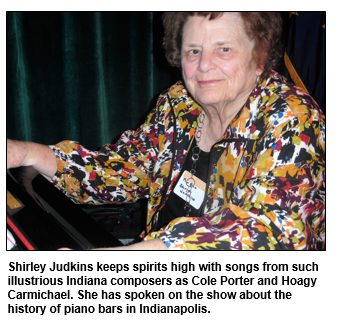 "I drew this question from your book," Nelson told Glory-June Greiff. No prize on that one for her! "I drew this question from your book," Nelson told Glory-June Greiff. No prize on that one for her!
Performances included the Herron High School String Quartet, acoustic music from PrairieTown with Dan Wethington and Janet Gilray, piano by Shirley Judkins and a vocal performance of "Back Home Again in Indiana" by Herron High School duo Ebony and Luan.
On hand for a scan-a-thon were our friends from the Indiana Album. They displayed some of their growing collection of archival images from Indiana's past and present.
Photos are rolling in. Won't you please send us any good ones to news@hoosierhistorylive.org?
Thanks to all who supported and attended the party. Now let's go make some more Hoosier history!
Your Hoosier History Live team,
Nelson Price, host and creative director
Molly Head, producer, (317)
927-9101
Richard Sullivan, webmaster and tech director
Pam Fraizer, graphic designer
Garry Chilluffo, media+development director
Michael Armbruster, newsletter editor
www.hoosierhistorylive.org
 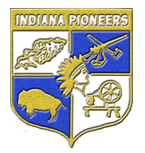
 
 
 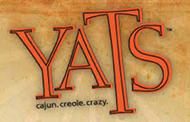
Please tell our sponsors that you appreciate their support: Indiana Historical Society | Indiana Landmarks | Indiana Pioneers | Lucas Oil | MBP Catering | Shirley Brothers Mortuaries & Crematory | Story Inn | Yats Cajun Creole Restaurant
Acknowledgments to Monomedia, Visit Indy, WICR-FM, Fraizer Designs, Heritage Photo & Research Services, Derrick Lowhorn and many other individuals and organizations. We are an independently produced program and are self-supporting through organizational sponsorships and individual contributions. We do not receive any government funding. Visit our website to learn how you can support us financially. Also, see our Twitter feed and our Facebook page for regular updates.
Thank you!
We'd like to thank the following recent, new, and renewal contributors whose donations help make this show possible!
- John and Diane Iozzo.
- Margaret Smith.
- Tom and Linda Castaldi, Fort Wayne.
- Peggy Hollingsworth, Connersville.
- Jane "Janie" Hodge.
- Lorraine and Richard Vavul.
- Kathleen Angelone.
- Richard Vonnegut.
- Jim and Marjorie Kienle.
- Georgia Cravey and Jim Lingenfelter.
- Dennis Arbuckle.
- Rita Kohn.
- Don Willsey and Judy O'Bannon.
- John and Lena Snethen.
- Juliet Emanuel, New York City.
- Sharon Butsch Freeland.

Your donation helps keep Hoosier History Live on the air, on the web and in your inbox!
|
March 18, 2017 show - upcoming
Health care during the Gilded Age
Maybe you have seen vintage advertisements for lotions and potions marketed as "cure-alls" during the late 1800s and early 1900s.
Amid the current debate about healthcare and governmental regulations, Hoosier History Live will time-travel to the Gilded Age and the subsequent Progressive Era (eras stretching generally from 1870 to 1920) to explore a range of aspects of the healthcare market.
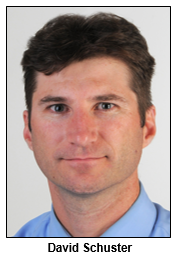 Nelson's guest will be David Schuster, an associate professor of history at Indiana University-Purdue University Fort Wayne who has researched health care during those eras. As per David's description during a recent presentation at the Indiana Medical History Museum, the Gilded Age was an era "that placed drug manufacturers, religious healers, lifestyle enthusiasts and professional physicians in competition with one another." Nelson's guest will be David Schuster, an associate professor of history at Indiana University-Purdue University Fort Wayne who has researched health care during those eras. As per David's description during a recent presentation at the Indiana Medical History Museum, the Gilded Age was an era "that placed drug manufacturers, religious healers, lifestyle enthusiasts and professional physicians in competition with one another."
During these eras, the Elkhart business that later became known as Miles Laboratories marketed patent medicine tonics to treat "nervous disorders." They included Nervine, which was said to soothe everything from headaches to backaches. (During the late 20th century, Miles Laboratories became part of Bayer). The Elkhart company was founded during the 1880s by a physician, Dr. Franklin Miles; it included an extensive mail-order business.
Our guest David Schuster will share insights on how people during the Gilded Age "differentiated 'normal' from 'abnormal'."
For his presentation at the medical history museum, David described some of the medical care challenges this way: "Faced with heightened expectations from patients, America's turn-of-the-century medical profession began promising something they could not necessarily guarantee: happiness."
© 2017 Hoosier History Live. All rights reserved.
|